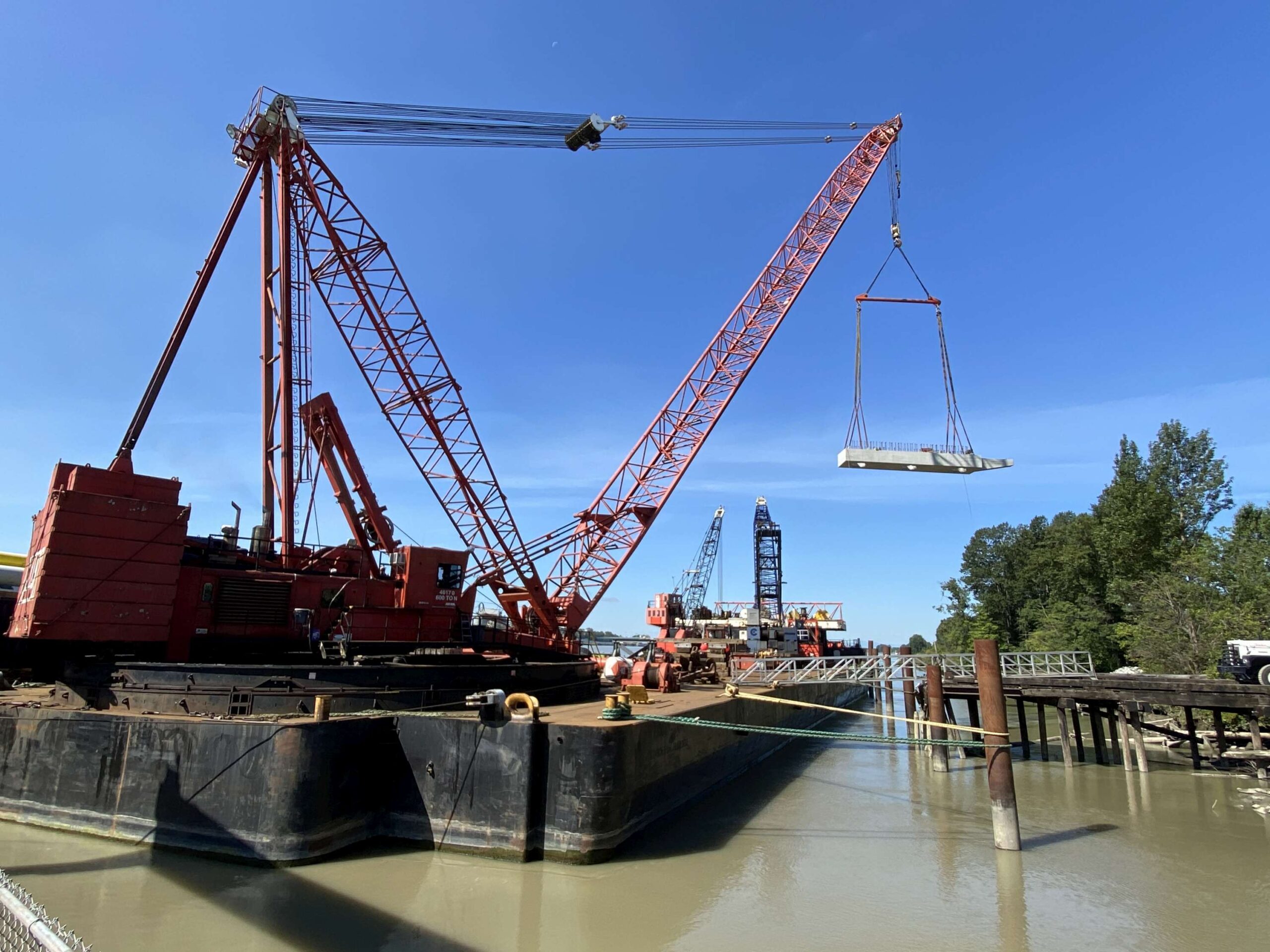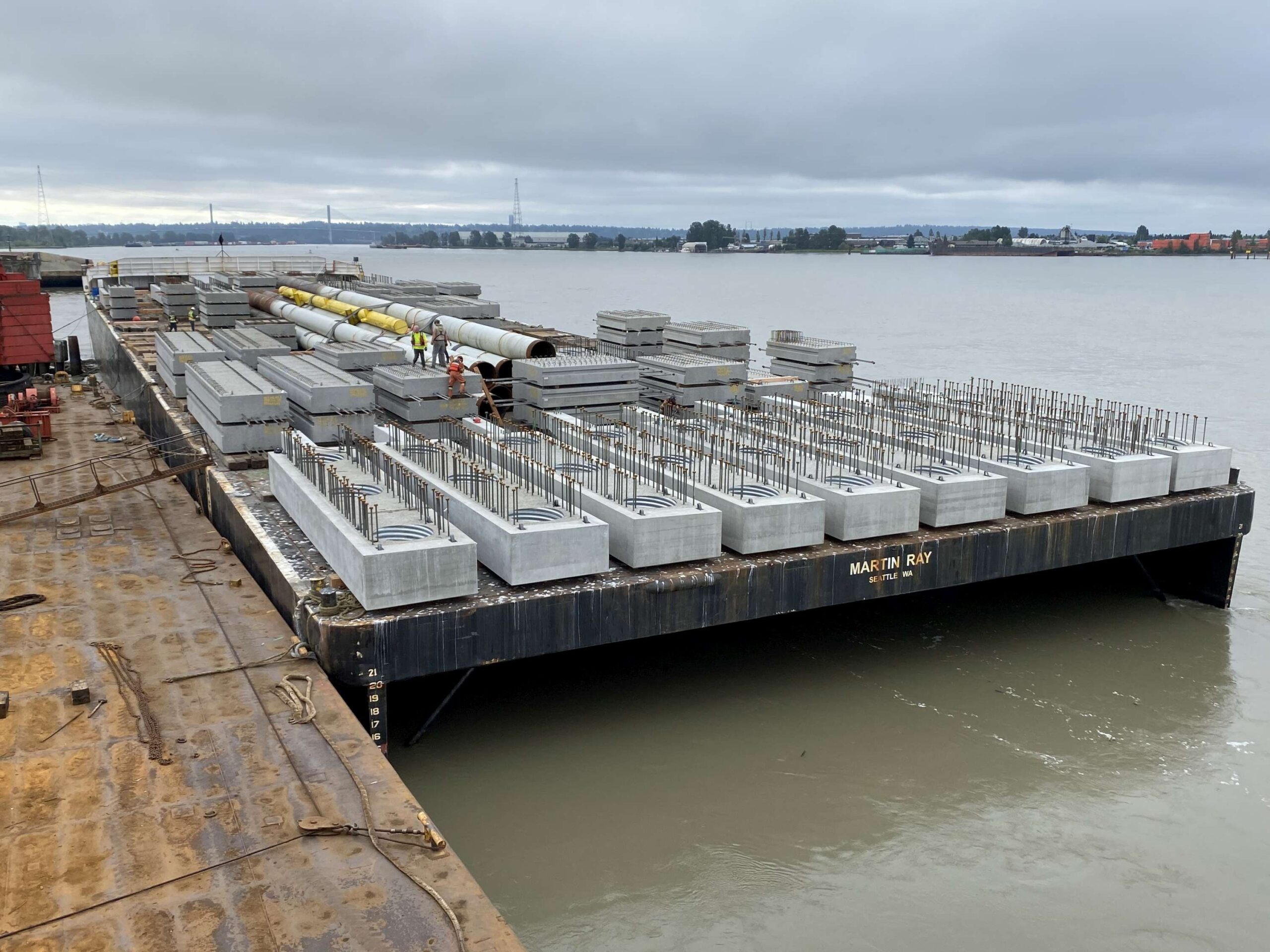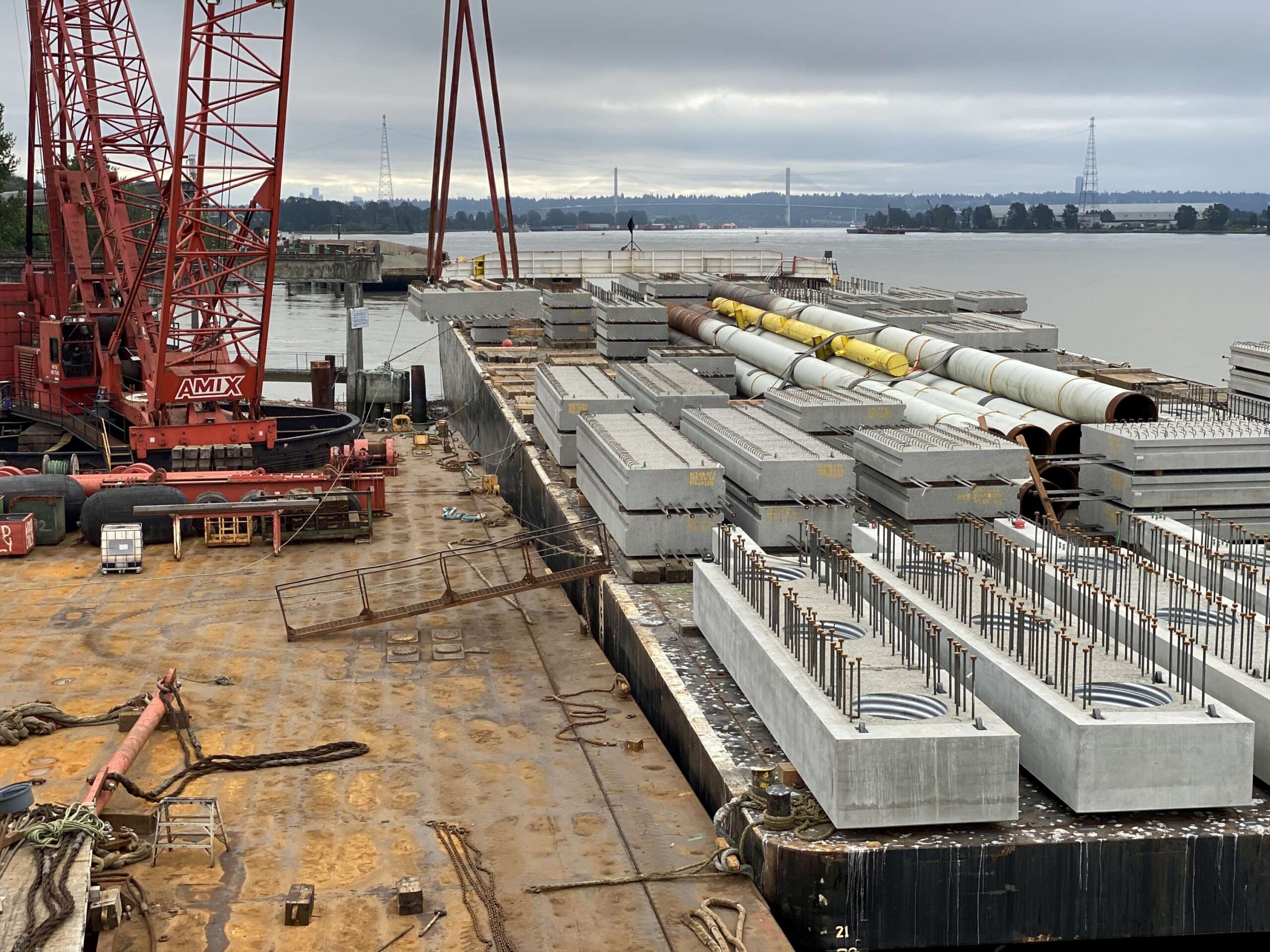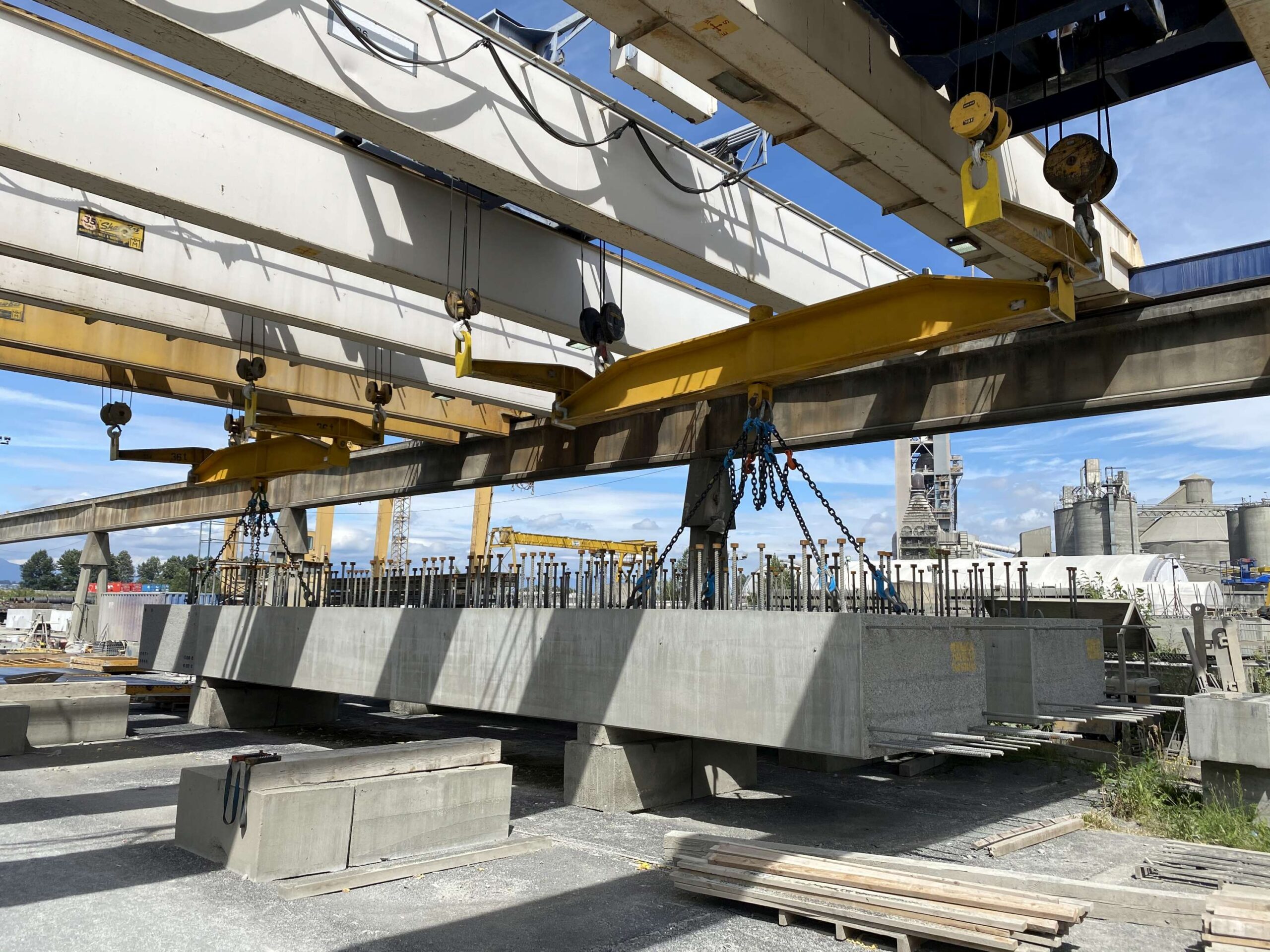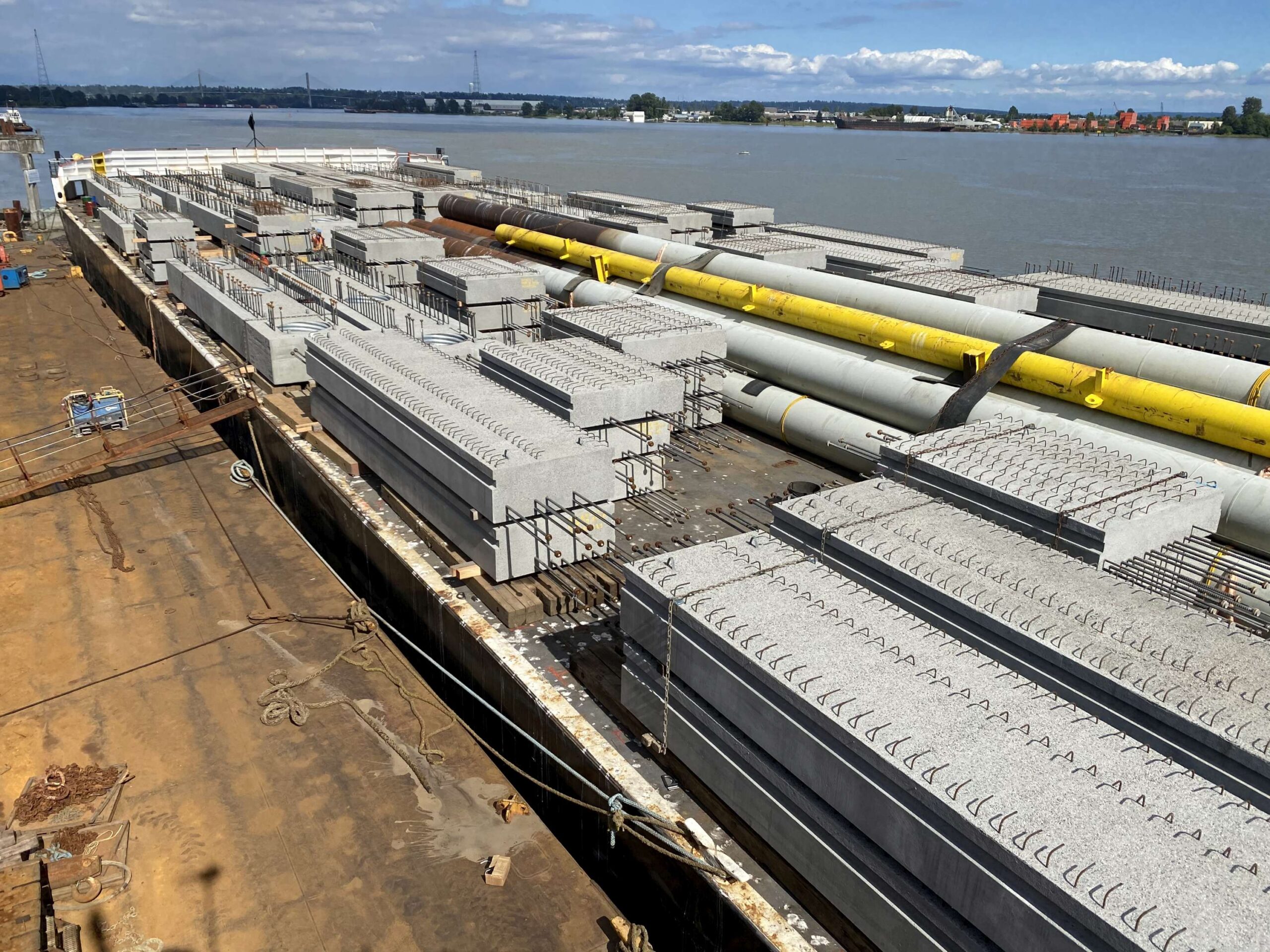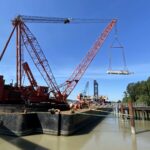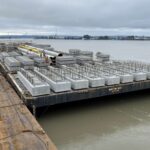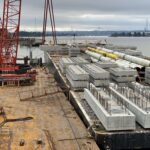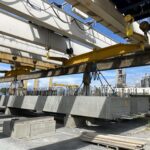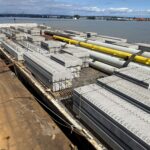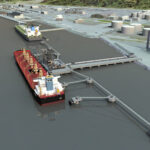Project Detail
Pacific Pile and Marine started building the Petroleum and Cement Terminal (PCT) trestle and deck in late April. The PCT will be a pile-supported dock located south of existing Port of Alaska docks, adjacent to Alaska Basic Industries Inc.’s cement-storage dome. It will replace Petroleum Oil Lubricants Terminal 1 (POL1), Port of Alaska’s primary petroleum dock and Alaska’s only bulk cement-handling dock. POL1 opened in 1965, is severely corroded, and suffered significant structural damage during the Nov. 30, 2018 M7.1 earthquake.
This first phase of PCT construction continues thru November 2020. The contract to complete PCT construction in 2021 is was also awarded to Pacific Pile & Marine in July 2020, with construction scheduled to resume next spring. The plan is to construct the PCT trestle and loading platform this year, and then return next year to build the fendering and mooring dolphins and install utilities and petroleum and cement handling infrastructure. The PCT should be completed and operational in late 2021.
The PPM team will drive some 200 piles between April and early August of this year. About 125 piles will be temporary and extracted between mid-August and September. Pile extraction is a relatively quiet process. The schedule calls for six-day work weeks with most activities between 7 am and 7 pm, but tides may occasionally shift work hours outside of this window. Beluga whale and other marine mammal activities will also dictate pile-driving activities. Pile driving noise and vibration is expected to be similar or less (for some temporary piles that are smaller/ shorter) than noise and vibration experienced during the 2016 test pile program.
Port modernization will:
- Replace aging docks and related infrastructure
- Improve operational safety and efficiency
- Accommodate modern shipping operations
- Improve facility resiliency – to survive extreme seismic events and Cook Inlet’s harsh marine environment
The total modernization program cost is expected to exceed $1 billion over the next decade.


